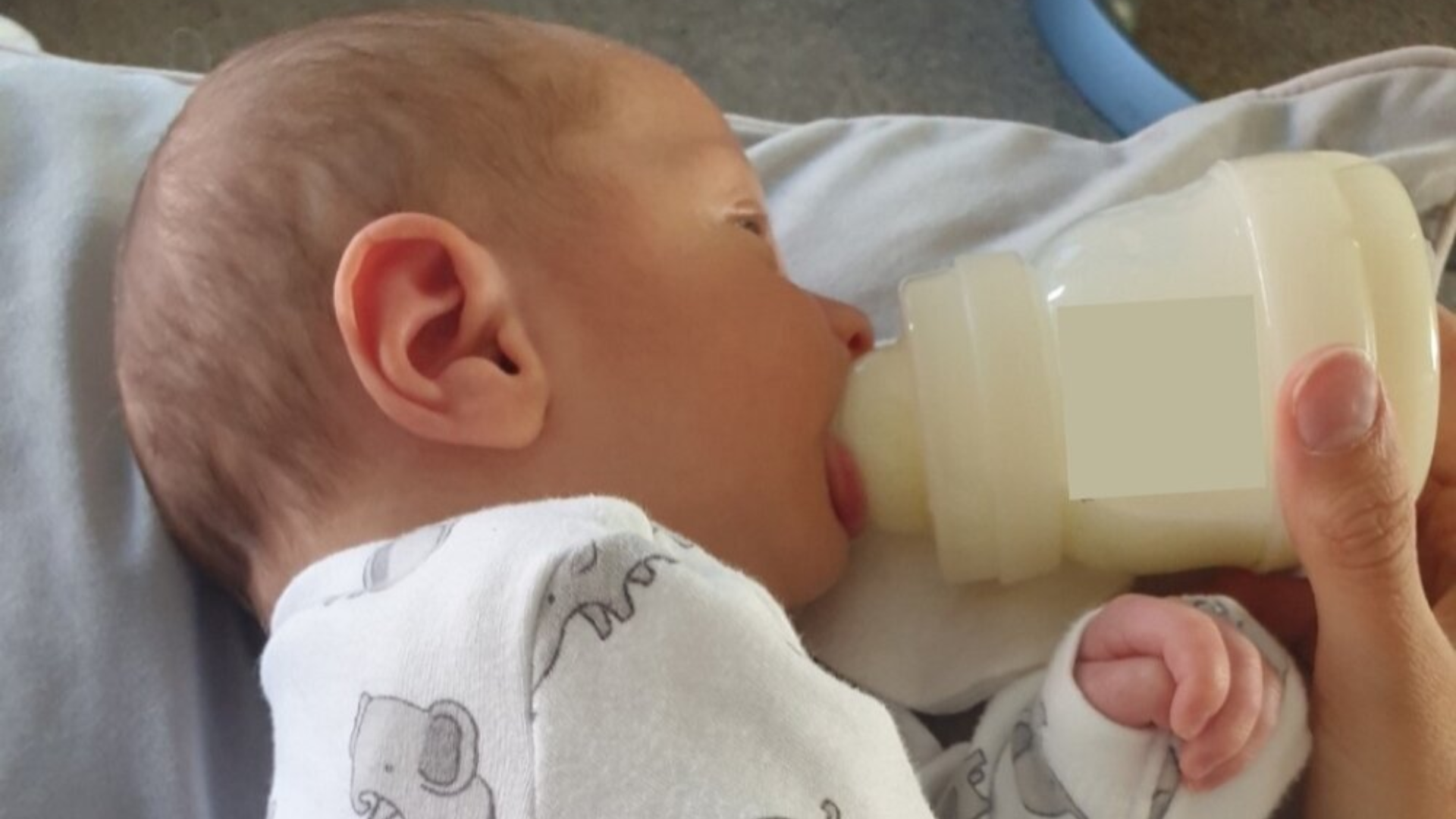Side Lying Bottle Feeding: A Gentle Guide for Parents

Feeding a baby is a moment of relationship, care, and learning. When it comes to bottle feeding, the way you hold your baby matters as much as what you feed them.
Traditional positions, such as the cradle hold, are widely used, but new discussions have highlighted side-lying feeding as a supportive alternative.
This position allows the baby to lie on their side, mimicking a more natural flow of milk and offering comfort, especially for babies who may struggle with reflux or swallowing.
This guide is designed for first-time parents, guardians, and anyone responsible for infant care who wants to ensure safe and nurturing feeding.
What is Side-Lying Bottle Feeding?
Side-lying bottle feeding involves your baby lying on its side, either on a firm surface or supported in your arms, while you offer a bottle horizontally.
Unlike upright or cradled feeding, where gravity can cause the milk to flow too quickly, this position more closely mimics the natural breastfeeding position.
It gives your baby more control over the flow of milk, helping them to feed at a pace that feels natural and safe. This technique helps newborns developing suck-swallow-breathe coordination.
It supports a calmer, more regulated feeding experience and can reduce the likelihood of choking, overfeeding, or spitting up.
Why It’s Considered More Natural for Newborns?
Many parents find side-lying bottle feeding feels more instinctive, especially for newborns used to breastfeeding.
Here’s why this method is often considered more natural:
- Mimics the Breastfeeding Position: Side-lying feeding closely replicates how babies latch during breastfeeding; they lie on their sides with milk flowing gently rather than forcefully.
- Encourages Baby-Led Feeding: In this position, babies control the flow and take breaks naturally, mirroring the rhythm of nursing and helping prevent overfeeding
- Promotes Relaxed Body Alignment: It supports a neutral spine and neck position, which is more comfortable and developmentally appropriate for newborns, similar to the position during breastfeeding.
- Reduces the Risk of Overfeeding or Choking: The horizontal bottle angle slows down milk flow, allowing newborns to swallow at their own pace and avoid gulping.
- Creates a Familiar, Calming Environment: The cozy, side-by-side setting often feels more secure and soothing, especially for breastfed babies transitioning to bottles.
This position creates the perfect bridge between breast and bottle, helping maintain that natural feeding rhythm your baby already knows and loves.
How to Position Your Baby for Side-Lying Bottle Feeding?

Follow these gentle steps to establish a comfortable and relaxed feeding routine that supports your baby’s natural rhythm.
1. Choose a Safe, Flat Surface: Use a firm, flat surface, such as a crib or play mat. Avoid soft pillows or cushions.
2. Lay Your Baby on Their Side: Ensure their head, neck, and spine are aligned. Keep the bottom arm comfortably positioned.
3. Heighten the Head Slightly: Use a rolled towel or firm baby pillow to raise their head for better digestion gently.
4. Support the Baby’s Back: Place a rolled towel or blanket behind the baby’s back to stabilize them.
5. Hold the Bottle Horizontally: Position the bottle with milk filling the nipple tip to ensure a steady flow.
6. Burp and Reposition After Feeding: Lift your baby upright for a gentle burp and place them back on their back for rest.
Benefits of Side-Lying Bottle Feeding

Side-lying bottle feeding is becoming a go-to method for many parents because it brings a gentle, natural rhythm to mealtimes, especially for newborns.
Here are some standout benefits that make side-lying feeding worth trying:
-
Reduces the risk of choking and overfeeding: Milk flows more slowly, allowing your baby to swallow at their own pace without gagging or gulping too much.
-
Supports paced bottle feeding: Encourages natural pauses during feeding, mimicking breastfeeding and helping babies recognize hunger and fullness cues.
-
It can help with reflux and gas: The slower milk flow and side position reduce air intake and tummy pressure, easing discomfort and spit-up.
-
Promotes bonding and relaxation: This cozy position encourages close eye contact, promotes calm feeding sessions, and fosters a stronger connection between the baby and caregiver.
This gentle feeding approach works exceptionally well during those peaceful evening feeds when both you and baby can slow down together.
When Not to Use Side-Lying Feeding
Certain cases require alternative feeding positions that provide better support and safety. Here’s when you might want to avoid this method:
- Babies with special needs or medical conditions – Infants with underlying health conditions, such as neurological challenges or feeding disorders, may need customized feeding support.
- If the baby isn’t latching or swallowing well, Babies who struggle to latch onto the bottle nipple or who have poor swallowing coordination might do better in a more upright position.
- When supervised feeding isn’t possible, Side-lying feeding requires close monitoring to ensure the baby doesn’t roll or choke.
If you can’t actively supervise your baby during the entire feed, such as at night or while multitasking, choose a more upright or securely supported position to minimize risks.
Conclusion
Side-lying bottle feeding can be a Useful Option for Both Babies and Caregivers.
This gentle angle supports a slower, more relaxed feeding pace and may help reduce the likelihood of ear discomfort or reflux.
Every baby is different, and what suits one may not work for another. If you’re beginning, it’s completely okay to feel uncertain.
With time and patience, you’ll find rhythms that meet your baby’s needs and your own as well.
Have you tried feeding in the side-lying position? Feel free to share about your experience or any suggestions you might have for other parents. Feel free to share in the comments below!






